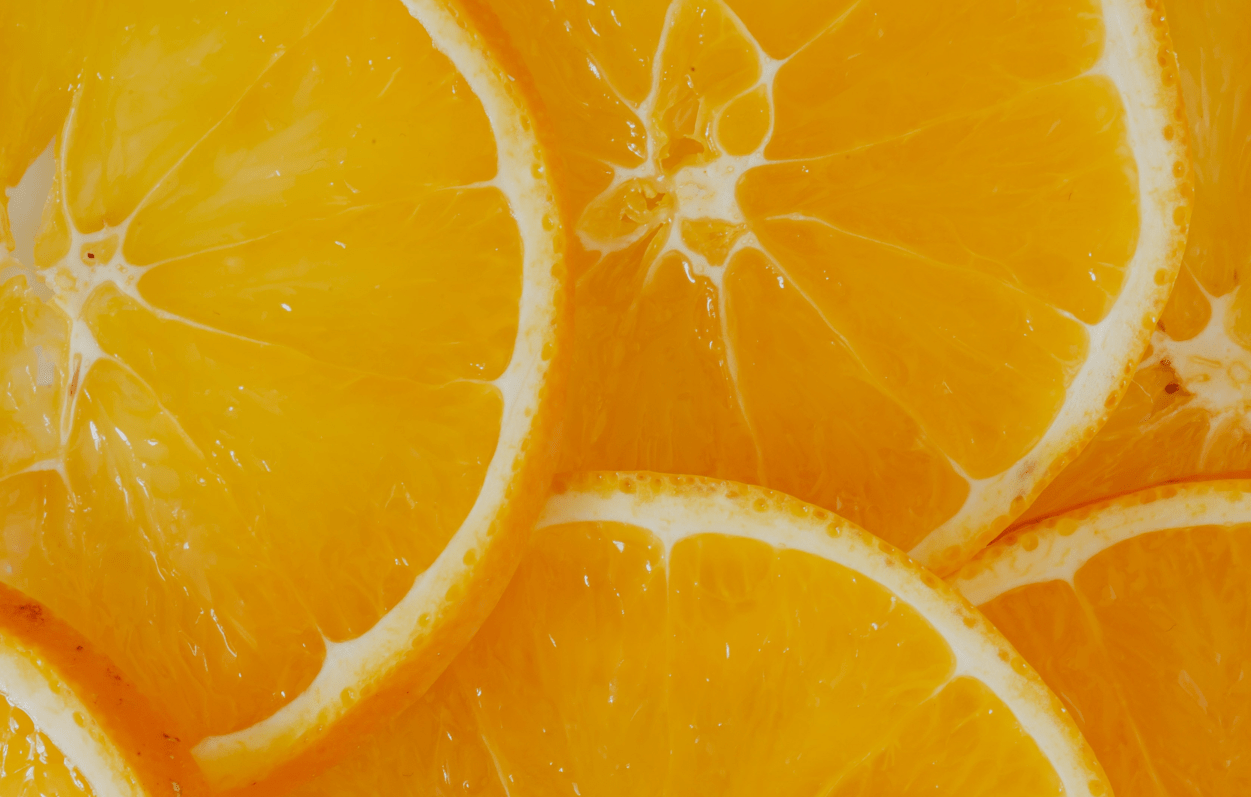nutrition
Your Straightforward Guide to Foods High in Vitamin C
On This Page

Vitamin C is a great immune-booster. Find out how to get the most benefit from your fruits and vegetables right here.
The Benefits of Vitamin C
Vitamin C, also known as ascorbic acid, is a water soluble vitamin that is essential for the growth, development, and repair of all body tissues. It is also required for critical functions such as the formation of collagen, absorption of iron, the proper functioning of the immune system, the maintenance of bones, our cartilage and teeth, and wound healing.
Vitamin C is a powerful antioxidant that helps to protect the cells from the damaging effects of free radicals, which are unstable molecules that can contribute to health issues and premature aging. Some free radicals are formed during normal processes in the body, while others result from exposure to air pollution, industrial chemicals, tobacco smoke, radiation, excess sun exposure, and unhealthy lifestyle choices.
The body is not able to produce vitamin C on its own so it has to be obtained exogenously through diet and, when necessary, supplementation. Being a water-soluble vitamin, any vitamin C that is not used is excreted through the body’s urine, rather than stored for future use.
Daily Vitamin C Requirements
The Recommended Dietary Allowance (RDA) of vitamin C for healthy adults ages 19 and up is 75mg for biological females, and 90mg for biological males. During pregnancy the RDA is at least 85mg, and 120mg during lactation. This abstract suggests that cigarette smokers need 35mg more, and that other lifestyle choices such as untreated stress, unhealthy sleep patterns, and exposure to toxins may also increase the need for vitamin C. According to the National Institutes of Health (NIH) Office of Dietary Supplements, the upper limit for vitamin C is 2,000mg per day.
Signs of Vitamin C Deficiency
Scurvy is the most well-known disease that is a direct result of severe vitamin C deficiency. Luckily clinical deficiencies of vitamin C that result in scurvy are rare these days. Other symptoms of low vitamin C intake include fatigue, poor immune function, dry and rough skin, unusually long time for wound healing, easy bruising, spoon-shaped fingernails, red patches of skin, bleeding gums, and corkscrew hairs. If the deficiency is left untreated more serious complications might occur. If you suspect you may not be getting enough vitamin C from your diet here are some tasty ways to boost your intake.
Fruits High in Vitamin C
Guava
One guava, a tropical fruit about the size of a pear, contains double the RDA of vitamin C and has twice as much vitamin C as an orange. It is also rich in other antioxidants and minerals such as potassium, iron, and magnesium. Guava also has a lower glycemic index than the orange and is a good source of dietary fiber.
Kiwi
Kiwi is a large berry that grows as an oval and is similar in size to a chicken egg. The sweet and tart tasting fruit contains approximately 70% of the RDA of vitamin C. It also contains iron, carotenoids, antioxidants, and dietary fiber.
Strawberries
One serving of 8 strawberries will give you 100% of the RDA of vitamin C, as well as moderate amounts of vitamins A, K, B6, and folate, manganese, potassium, and dietary fiber. And they’re delicious whether eaten whole, as part of a dessert, dipped in chocolate, or served in champagne.
Oranges
The orange is probably the fruit most commonly associated with vitamin C, though it does not have the highest vitamin C content. With approximately 70mg of vitamin C in a medium orange, the popular fruit is packed with other nutrients like calcium, potassium, folic acid, natural sugar, and fiber. Oranges are also high in acid, however, making moderation key, especially if you have a sensitive stomach, or prone to indigestion.
Papaya
One large papaya contains 235mg of vitamin C. The sweet tropical fruit also contains vitamin A, vitamin E, copper, magnesium, potassium, and fiber, and has a moderate glycemic index.
Lychees
A cup of lychees contains about 70mg of vitamin C, as well as vitamin B2, copper, potassium, and riboflavin. They are especially rich in polyphenols and are purported to have numerous beneficial properties. They can be considered high in sugar (especially if you get them canned in syrup), however, so people should consider enjoying lychees in moderation or opt for fresh lychee instead.
Acerola cherries
Acerola cherries have earned their reputation for being a super fruit with a staggering 1,800% of the DV of vitamin C in a cup of cherries. They also contain phytonutrients like carotenoids, flavonoids, and anthocyanins. While technically berries, the cherry-like berries became incredibly popular during the pandemic, some believe, for their reputed antioxidant properties. If you buy them fresh, be sure to eat them within 5 days. And go easy on them - eating too many may create some gastric distress.
Blackcurrants
One serving of blackcurrants gives you 203mg of vitamin C. The small, sour berry is a powerful antioxidant and believed to have many beneficial properties as well. They are eaten raw, used in cooking and baking, and make a delicious preserve.
Cantaloupe
One cup of cubed cantaloupe contains nearly 60mg of vitamin C. It is also one of the highest fruit sources of vitamin A, in the form of carotenoids. Cantaloupe contains potassium, magnesium, fiber, vitamin K, and most of the B vitamins. When buying a fresh cantaloupe, look for one that feels heavy for its size (water weight is a good sign), sounds hollow when you flick it with your finger, and smells from the outside like a tasty, fresh cantaloupe.
Kakadu Plums
Also known as the billygoat plum, kakadu plums contain more than 3,200% of the DV of vitamin C in one plum. They are smooth, egg-shaped, fleshy, and green or yellow in color. High in fiber and copper, the kakadu plum is typically eaten raw or made into a jam. Indigenous peoples of Australia have been using them for food and medicinal purposes for centuries.
Vegetables High in Vitamin C
Bell Peppers (especially red and yellow varieties)
Nutritionists encourage people to eat the rainbow in fruits and vegetables. Bell peppers are an important part of that rainbow. Any bell pepper is an excellent source of vitamin C, orange bell peppers have 158mgs, red have 142mgs, and yellow have 139mgs.
Kale
Kale is a wildly popular superfood that is packed with nutrients. At only 33 calories per one cup, kale contains 80mgs of vitamin C, and significantly more than 100% of the DV of vitamins A and K. It is also an excellent source of fiber and many minerals. Kale is great in salads, smoothies, and sauteed. It even makes a great, healthy chip. Try it.
Broccoli
Ask any nutritionist or physician for a list of the most nutrient-dense foods and broccoli will surely be close to, if not at, the top of the list. The green cruciferous vegetable is loaded with vitamin C (101mgs per cup), fiber, vitamins K, A, B6, manganese, potassium, phosphorus, magnesium, and calcium. However you eat it, broccoli is a great addition to any meal.
Brussels Sprouts
Brussels sprouts are gaining in popularity now that people are cooking them properly. The squishy, horrible texture of the brussel sprouts of a bygone era have become crunchy, tasty, and a perfect side for any meal. The cruciferous vegetable that looks like a mini-cabbage is packed with nutrients, including 85mgs of vitamin C when raw, and 62mgs when cooked. Try them both ways.
Spinach
Spinach is one of the most popular vegetables of them all. It is packed with nutrients and known for its health benefits. Cook it, put it in salads, smoothies, or any other way you’d like: you can’t go wrong with this nutrition superstar. Spinach is a source of iron, vitamin K, calcium, and folic acid, spinach contains 8mgs of vitamin C, which makes it a good, but not excellent, source for vitamin C.
Mustard Greens
While mustard seeds have long been the important harvest of the mustard plant, mustard greens are finally getting their due for their incredible health benefits. They are packed with nutrients, including 217% of the DV of vitamin C.
Kohlrabi
Also known as German turnip, kohlrabi is a nutrient powerhouse that contains 10mg of vitamin C per serving.
Bok Choy
Bok choy is a green Chinese cabbage that is packed with nutrients, including 44mgs of vitamin C in one serving.
Parsley
While fresh parsley is considered a rich source of vitamin A and potassium, it is a moderate source of vitamin C, with 5.1mgs. It’s still a really healthy green to eat!
Swiss Chard
The leaf portion of fresh swiss chard is considered to be a good source of vitamin C, with one serving providing 35% of the DV. The stem, while still healthy, is a rather limited source of vitamin C.
Factors Affecting Vitamin C Absorption
Vitamin C quickly breaks down when exposed to heat, so raw fruits and vegetables are the best way to get your C.
Potential Side Effects and Excessive Intake of Vitamin C
Vitamin C is water soluble, so the body excretes whatever it doesn’t use in urine. Consuming too much too quickly can, however, can potentially lead to digestive discomfort. These symptoms are typically mild and go away quickly.
The Bottom Line
Vitamin C is critical for your body’s overall health and well-being. Since the body doesn’t store it, and you must get it from food or a vitamin C supplement like Care/of’s The Citrus Savior, it is recommended to include fresh fruits in your diet daily.



